
WDFW Lays Out Initial Washington Coast Steelhead Season Date, Gear Reg Proposals
Washington Coast steelhead managers began fleshing out potential future permanent fishing regulations with the angling public on Thursday night.
Previously, they’d said that their rulemaking would focus on gear restrictions and season dates, and during an online meeting yesterday evening they laid out some starting proposals on those fronts.

On the menu – aligning the closing date of winter steelhead season to March 15 up and down the coast; reducing the hatchery steelhead limit on the Bogachiel, Quillayute and Hoh Rivers to two a day; and going selective-gear and single-barbless-hook-only, among other regs, in the Grays Harbor and Willapa Bay watersheds.
Those ideas came out of recent WDFW staff meetings that looked at the current regs, how long seasons have actually run the past 10 years, hatchery production, and steelhead population status. Chad Herring, Region 5 Fish Program manager, said they were being thrown out there to spur discussion as his agency collects public comment in the coming weeks before new rules are eventually adopted and implemented early next year.
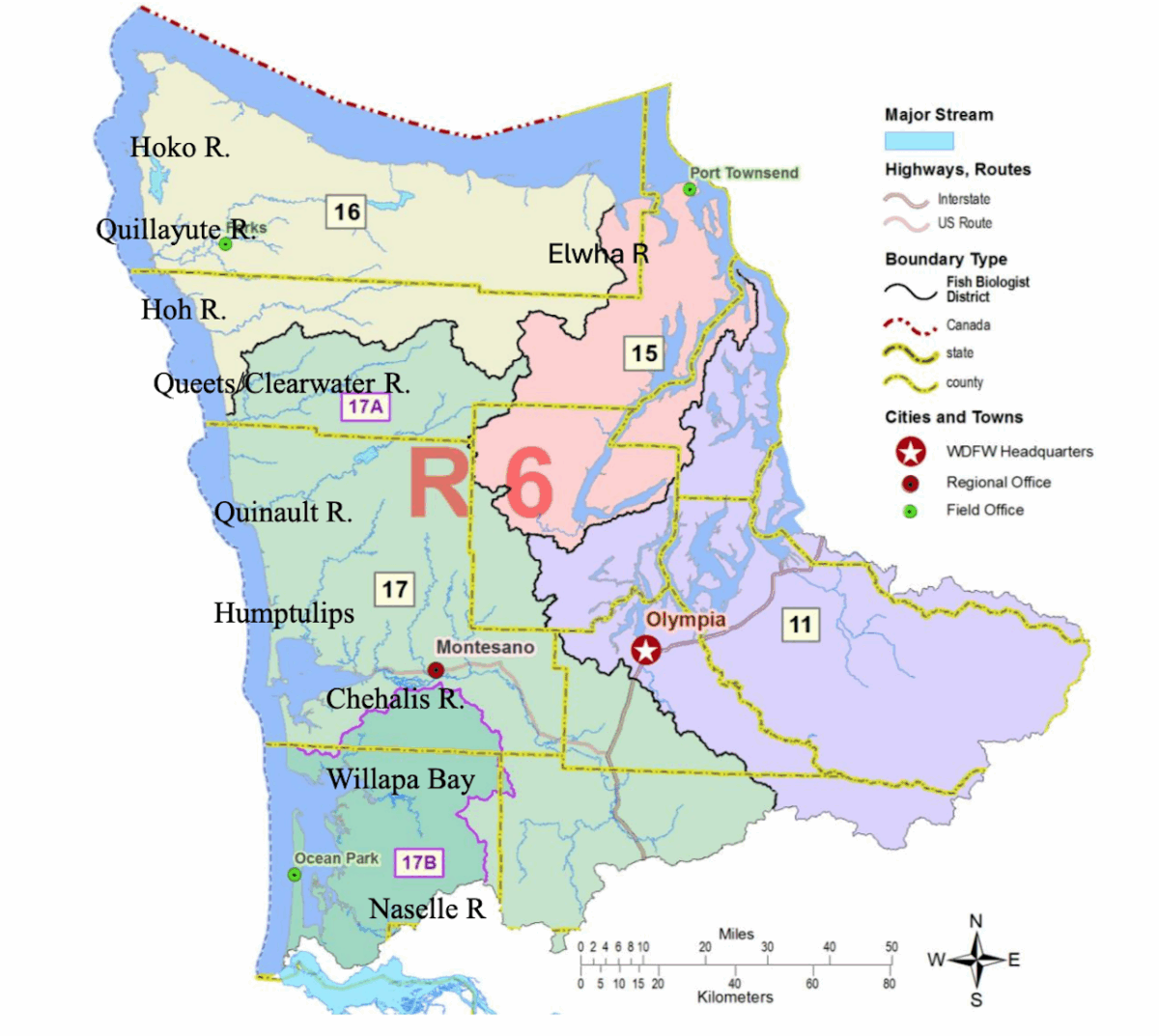
WDFW’s overall premise is to better align the rules for Olympic Peninsula, Chehalis Basin and South Coast steelhead, trout and game fish in the face of steelhead declines that have resulted in operating fisheries on a year-to-year basis under emergency restrictions.
Looming in the background is a petition to list OlyPen steelhead under the Endangered Species Act. As a result of a recent court agreement, the feds will make a key finding on that by December 1; they’ve already found the stock is at moderate risk of extinction.
Among those attending Thursday’s virtual meeting was longtime guide Bob Kratzer, who said he could see closing season in mid-March on the rest of the Washington Coast but not the West End, where he said the Quillayute has met its winter steelhead escapement goals nearly every year the past 40 seasons.
He pointed out that a number of concessions have already been made to help out wild steelhead in these waters, including the end of retention and a bait ban, but potentially losing the back half of March wasn’t fair when weighed against what’s already been given up.
“This is just a feel-good rule,” he said.
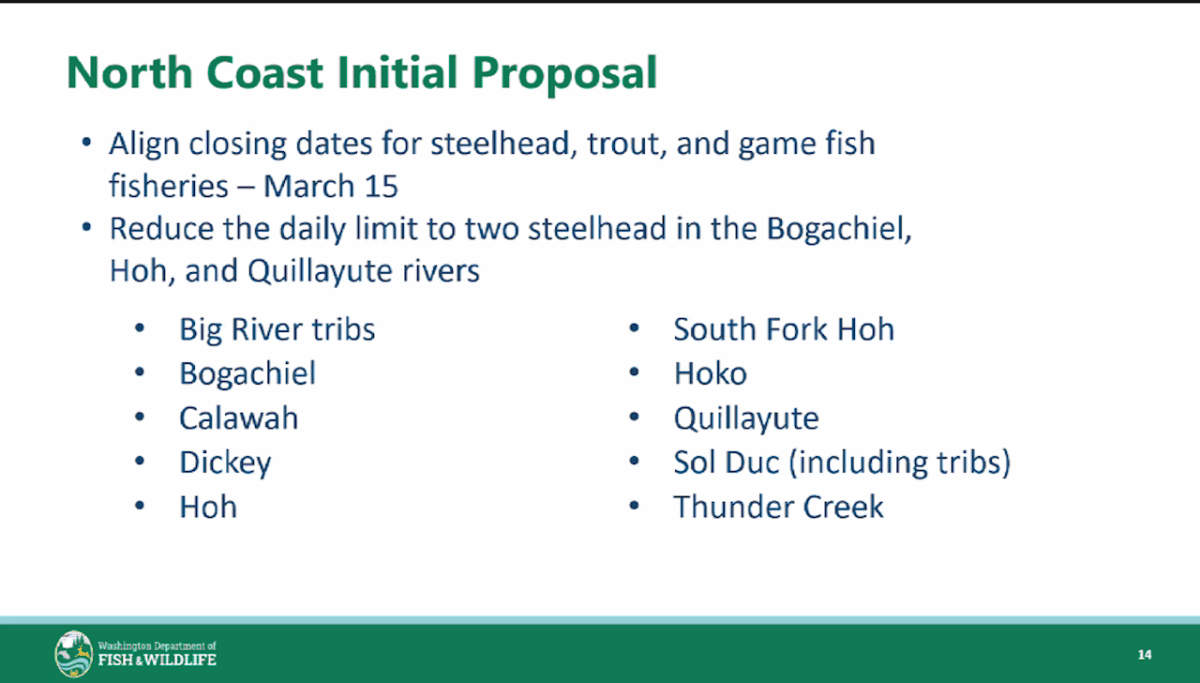
Josh Warnick also wasn’t in favor of the March 15 closure, and he suggested closing fishing in boats to pick up an extra two weeks of angling at the end of the month.
Gary Marston looked at the potential closure date from the perspective of the Chehalis Basin and said given the watershed’s late-timed integrated hatchery programs, March 15 would limit the ability to catch clipped fish and keep them off the gravel with wild steelhead.
Jonathan Stumpf wanted to know the reasoning behind shutting things down around the Ides – was it to protect kelts or spawning steelhead?
Herring said it was a combination of both. He said the “backbone” of coastal steelhead productivity historically has been two- and three-salt, repeat-spawning hens, but when WDFW looks for the best “bang for the buck” in terms of protecting the runs, they see the most angler encounters with these fish occur in late March and April.
That’s also a time when kelts – fish that have already spawned but are still willing to snap at fishermen’s offerings – are in pretty poor condition, Herring said, as they head back to the ocean to recuperate before making another run.
While season hasn’t been open this late in awhile, April 15 and April 30 are the closing dates listed in the permanent regs on some North Coast steelhead rivers.
“We just wanted to throw something on the table and inspire great feedback,” Herring added.
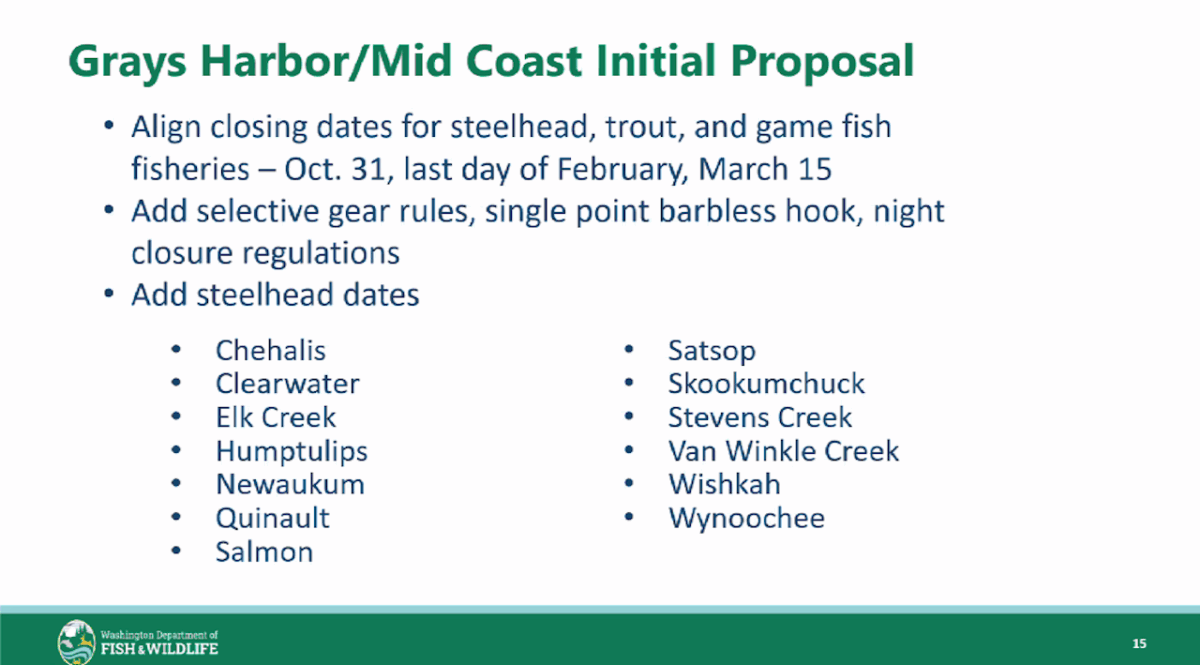
Kratzer said that based on his own observations, more steelhead return than WDFW believes, especially earlier in the season. He also said that as an angler, guide and conservationist (he’s also on the board of a statewide guides association), he didn’t ever want to see the wild fish go away.
While Washington Coast runs have bounced back somewhat from an all-time low at the start of this decade, WDFW says that this year’s return came in below forecast and also possibly below spawning escapement goals.
Brian McLachlan worried that state managers’ move towards aligning regulations was a policy shift, and it was going away from maximizing angling opportunities. He preferred regulations tailored to individual waters. He urged WDFW to adopt permanent rules that were as liberal as possible so as to preserve opportunity.
Anglers absolutely HATE the complexity of the regs, but it really is about eking out as much opportunity as possible without killing off the resource. Simplified regs would kill the carveouts for more productive systems and dumb things down to the level of poor performers.
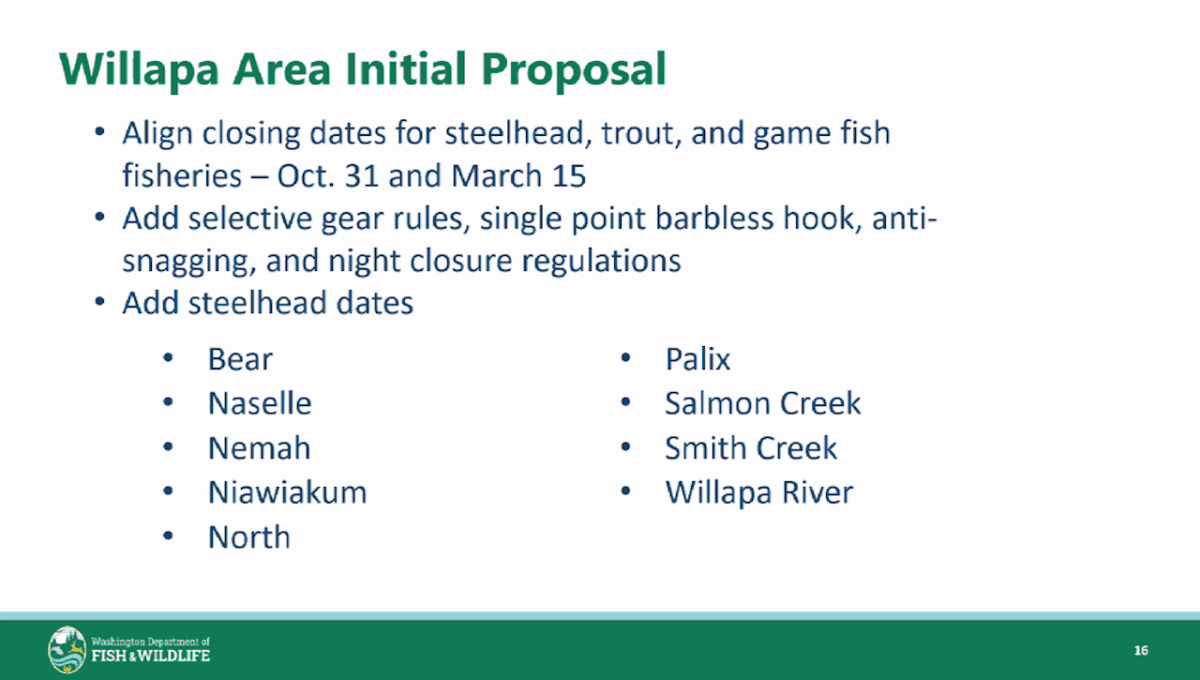
Officially, part of WDFW’s thinking in this process is to reduce its reliance on e-regs. “By establishing more appropriate permanent season regulations, WDFW aims to minimize the need for annual emergency regulations,” it explained online.
One thing the agency is not looking to include in the pamphlet is the boat-fishing ban seen in recent seasons. They want to keep that in their back pocket as a season-specific emergency measure, Mark Baltzell, WDFW’s statewide salmon and steelhead policy advisor, said last night.
Naselle River angler Andy Darcher said he liked the consistent closure dates – in his neck of the woods, that would be October 31 and the last day or February or March 15 for steelhead, trout and game fish – and no-bait proposals. He also wanted no-boat-fishing rules on smaller rivers as well as increased hatchery steelhead limits to reduce the odds of any spawning in the wild. He worried about more pressure this coming season due to the Skagit-Sauk closure, already announced due to state budget cuts.
Thursday’s presentation also included lists of specific rivers – Calawah, Hoh, Sol Duc, etc., on the North Coast; Clearwater, Quinault, Satsop, Wynoochee, etc., on the Central Coast/Grays Harbor; Bear, Nemah, Willapa, etc., on the South Coast – and according to Baltzell, that was meant to telegraph where WDFW staffers themselves want to see reg changes.
“For instance, the ‘Big River Trib’ suggested change from staff was just aligning game fish and trout seasons and less about steelhead. That level of specificity will be coming out in the near future,” he said via email.
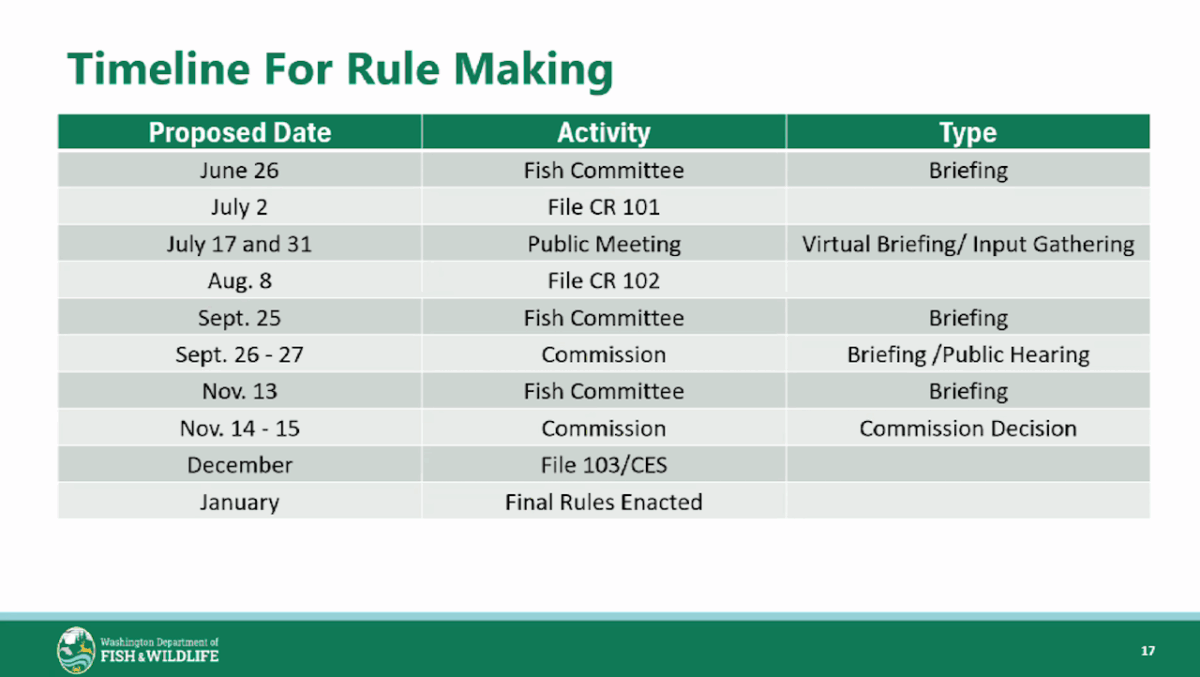
Meanwhile, the hour-and-a-half-long meeting had achieved its goal.
“Chad and I wanted some initial feedback for this first meeting that we can then consider alongside staff suggestions for our next meeting where we are planning to have more specific watershed discussions on the 31st,” said Baltzell.
The 31st is a reference to the next virtual briefing, set for the end of July.
Afterwards, in early August, WDFW will file an official notice of proposed rulemaking, followed by several Fish and Wildlife Commission and committee briefings for a November decision, filing of the official rules and enactment in January.
For last night’s presentation, timeline and more information, see WDFW’s coastal steelhead management page.
